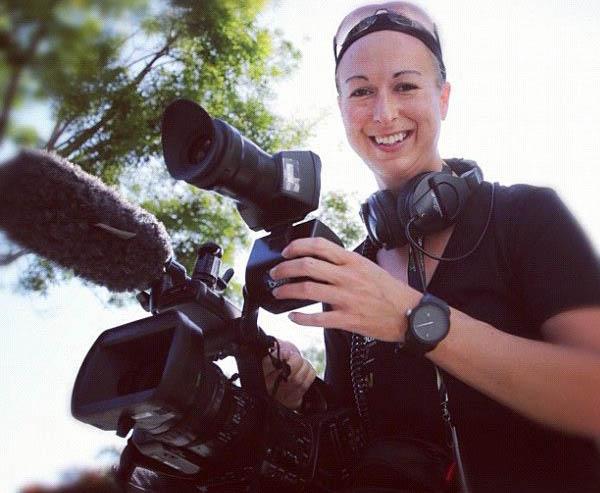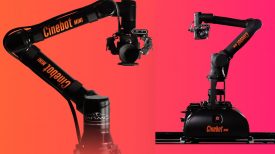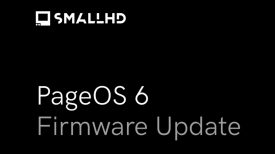Guest post by Nicky Woodhouse, self-shooting director and editor:
Fluid Juice Surfboards, Cornwall from Nicky Woodhouse on Vimeo.
The Shoot:
As a London based self-shooting director and editor who regularly treks down the M4 to get my wave fix, The London Surf Film Festival presented me with the ideal opportunity to mix business with pleasure and have a go at making my first surf film.
The idea stemmed from a trip to collect my new custom-made surfboard from the Fluid Juice factory in St Merryn, Cornwall in October 2010. Everything about the experience of rocking up to an old warehouse in an out-of-the-way Cornish field and finding this hive of activity and craftsmanship going on inside was totally cool. Shaper Adrian Phillips, who has been making custom boards since the 70s, showed me around his shaping room, the spraying room and the glassing room. I realised I had never really given much thought to how a surf board was actually made. I had certainly never seen a film about it.
Skip forward to March 2011 and I had persuaded Adrian to let me make a film about him that would aim to show the craftsmanship that went into making a surfboard. With the stellar advice of our man Dan Chung I had recently bought a Canon 60D, Tamron 17-35mm f2.8, Sigma 70-200mm f2.8 & Juicedlink DSLR audio box – this shoot was going to be my first attempt at DSLR shooting. Eek! I also had my trusty Sony EX1, GoPro HD, Glidetrack slider, Vinten Vision Blue and Libec TH650 tripods with me.
The first set up we did was at Harlyn beach with Fluid Juice pro rider Toby in extremely wild conditions. Braving the occasional outbreak of rain and a mentally strong onshore wind (that made holding an umbrella over my camera impossible) I shot the surfing sequence with the GoPro attached to Toby’s board facing him riding the wave and then switched it round to capture his POV. On the beach I set up the EX1 to get wide shots (none of which actually made it into the cut due to the extreme wind shaking my Libec tripod). I also had my 60D and Sigma 70-200 on my Vinten tripod placed at the water’s edge and was shooting right at the end of my lens to get the action shots. The wind again made this tricky and with the tide racing in I got soaking wet feet.
After a couple of hours we went back to the factory and I shot Adrian’s key interview. Whenever possible I always shoot my key interview first so I know what shots I need to pick up as illustration. I set the EX1 on a wide shot and used the 60D with the Sigma for the main close up shot of Adrian. As I was a bit nervous about recording sound with the Juicelink I put a radio mic on Adrian and had it transmit into the EX1 (painfully manually syncing this up in Final Cut Pro – not having heard about PluralEyes at this stage). I spoke to Adrian for around an hour to get this interview, perhaps turning over for around 30- 40 minutes. I also shot cut-aways around the factory and filmed Benji spraying a board. Shooting with the 60D and the Tamron on the Vinten for the first time inside and not having to worry about the sound was a complete joy. I could see the richness of the colours in the 60D flip out screen and it was incredible to be able to move so close to things and still get sharp focus. All the footage I shot on this day was in the standard “portrait” mode on the 60D.
The manufacturing sequence was then shot in April over three days. I shot the shaping sequence on one day, the glassing on the next and the sanding and completion on the third. I either used the 60D and the Vinten or the 60D with Vinten and Glidetrack on top to get the sliding shots. I recorded the sound of the manufacturing that is over-dubbed on to the film on the Juicedlink using a Audio Technica AT875R shotgun mic.
The factory had lots of daylight strip lighting that help Adrian and his team get a true impression of colour so it was great for me and allowed me to shoot wide open at f2.8 for most of the time. The natural light in the factory really helped with the feel of the film and certainly allowed the 60D to perform to it’s best. I shot at 1/50th shutter and kept the ISO to 100 throughout. This is the default set up I now use now with other interviews I shoot on the 60D.

The Edit:
The aim of this film was to make a great short but also to allow me to work out how to shoot on the 60D and work out my editing work flow.
I cut the film in FCP 7 over seven days – far longer than I would need now I have my work flow nailed down, but there was a lot of trial and error involved at the front end with getting my footage in the right codec and into the FCP project. The workflow I came to was the following:-
1/ Copy the native H.264 files from the 60D card (and also the GoPro Card) to 2 hard drives (so you have a back up.)
2/ Create a batch list in MPEG Streamclip that will encode all your films from H264 to Prores 422. In the “Movie Exporter” window I select Apple Prores 422, slide the quality to 100% and de tick “Interlaced Scaling” and press “Make Movie.”
3/ When it asks me to save the file on the next screen I make a new folder called “Encoded clips” and then MPEG Stream Clip will place all the clips in the batch into this new folder.
4/ Once MPEG stream clip has completed the encoding I import these Prores Clips into a new bin in FCP.
For my EX1 footage I use Sony XDCAM transfer to encode to MPEG-2 Video Quicktime that will sit happily with Pro Res footage on my timeline. I have read blogs since saying that you should really transcode to Prores instead (which does, I admit, sound sensible) but I completed this edit fine with both these codecs on the same timeline.
So that was it. Mission complete. A really great first attempt at DSLR filmmaking that only made me want to shoot more stuff on my 60D. I have since had to switch my Juicedlink for a Tascam DR-40 audio recorder and dual system sound. This is because I encountered numerous issues with my Juicedlink recording distorted and dirty sound. It is more stressful on the shoot having to press record on two different devices but once I get the cards into the edit and the sound is nice and clean I am relieved I put the effort in!
Nicky Woodhouse is a self-shooting director, editor and promo producer based in east London. She produced Webcameron for David Cameron in the run up to the 2010 general election and now runs her own production company, Woodhouse TV, producing video content for brands, businesses, campaigns and events.
Fluid Juice was shortlisted at the London Surf Film Festival.






